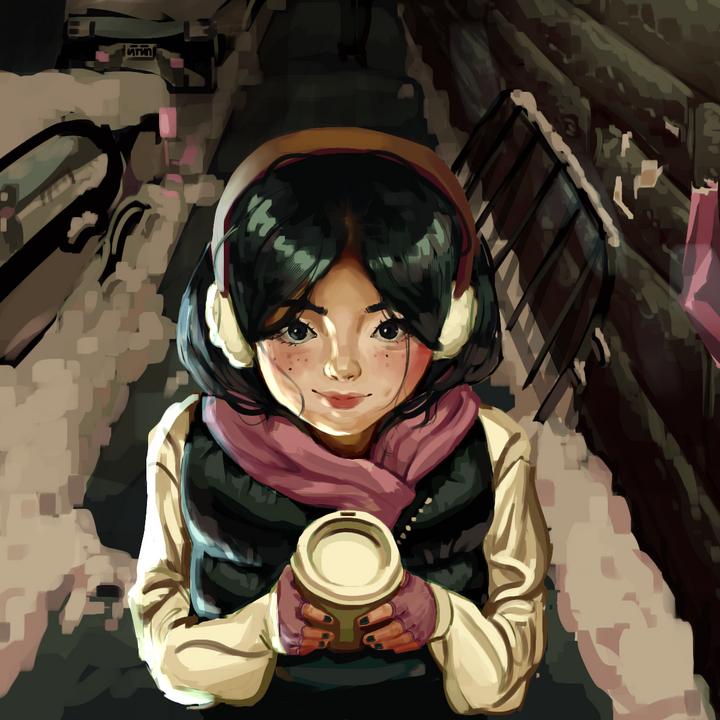PINETREEPOST PINETREEPOST





Hello Pinetree! Welcome to the first issue of The Pinetree Post 2022-2023. Not only that, but at the time of writing, we are one week away from Winter Break. I’m confident you are all as excited as I am for the festivities, not only for the Christmas-Themed Spirit week but for the approaching holidays. Let’s finish this 2022 Calendar year with many more great memories.
For the grade 12 (and the grade 11 too) that made it to the Winter Formal, I hope you all enjoyed it, because I sure did. You can read some of the event details in (December School Event Report, p.4) Although the event already happened, it was still a great article by Sun-Ho Kim.
On a more serious note, Aidan Tsen wrote an interesting and informative update on (RussoUkrainianwar,p 6) Aidan mentions the many setbacks and tribulations Ukraine has gone through, as well as the moment of territory and contributions. It has been 9 months since the Russian Federation started invading Ukraine in February and despite losing a lot of media attention, the situation is just as bad
As I’m sure you heard, a Halloween tragedy happened in Seoul, South Korea The horrible trampling of the nightlife enjoyers left the country in shock The crowd reached numbers of approximately 100,000 people, which the police could do little to stop Read more in (TheItaewon Crush,p 13)
Ifyouareinterestedinlookingbackatpastschool events,IrecommendreadingKatherineKong’s (RemembranceDay,p14).Novembershouldn’tbe theonlytimewepayrespectstoourveteransand byreadingthisshortarticleyoucanrelivethe ceremonyhostedatthePinetreegym.
LokyeeWonghelpsusunderstandtheperspective ofafreshmanin(Grade9’sFirstYearinPinetree, p15)Itwasnotlongsincewewerein9thgrade,or maybeyoureadingthisarecurrently(Ifso,good luck)butthisinterviewremindsusofhow energeticwewerestartinghighschool Oh,how thathaschanged Ashortinterview,butenoughto understandthesentiment
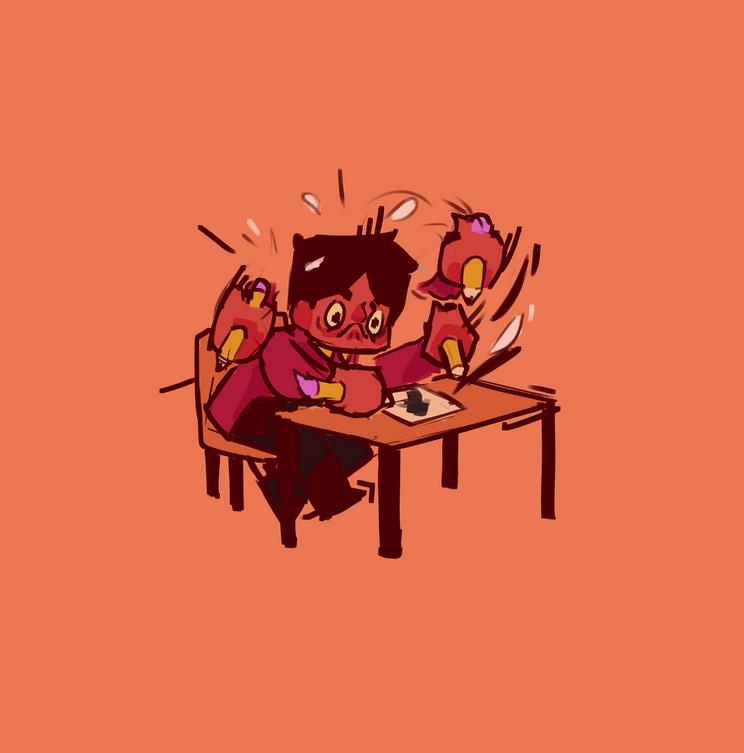
Lookatthat,notquite3amyetandI’mdonewith thismonth'sarticle!I’llgivemyselfapatintheback forthat IhopeyouallhaveaMerryChristmas,ora HappyHanukkah,orjustagreatwinterbreakon behalfofthePinetreePost
Sebastian“Chevi”Hernandez Editor-in-ChiefAlthoughwehaveallfaceddifficultand exhaustinghardshipsofourownthisyear,from studentlyduties,jobs,andpersonalobstacles,2022 hasbeenanamazingandfulfillingyearforusall, astheschoolandsocietyasawholefinallybegan itssteadyrecoverybackfromthe2-yearlong pandemicholdups;andwiththenewyear'sdayin sight,thegrade12shaveagrandeventtofinish 2022withabang.
WinterFormal!ItisPinetree’sbiggesteventforthe 2022/2023schoolyear,butmanymightnotknow thedetailsbehindthisgrandfestival Whatisit? Whatisintheevent?Whowillbeinvolved? Thankfully,somehelpfulcommentsfromtheGrad CouncilExecutiveswillanswersomeburning questions
Tobegin,WinterFormalisaMasqueradethemed gradeventmeantonlyforgrade12s,setupbyMr Martin,Ms Dahillion,Mr Nelson,ourDJRaeand theGradCouncil Theeventwilltakeplaceon December8th,andtheguestsaretowearsemiformalclothingalongsideamasquerademask!

So,whatisthepointoftheWinterFormal?What shouldweexpect?"
Kimberly:“Thefirstbigeventofthisyear,why notmakeitanighttoremember?Youwillfeel likeyou'reinanexclusiveandexpensivefeeling‘seniorsonlyclub!’”
Azumi:“Togettogetherwithyourgradclassto creatememoriesthatcanbecherishedinthe future.Avarietyofactivitiesaccompaniedby musicandfuninthefoyer!”
Tai:“Celebratehowfarwe’vecomethisyear andhonestlyjustanotherreasontohavea goodtimewithfriends!Goodmusic,food,and anightfullofmemories!”
Jasmine:”Afuneventhostedbyyour graduatingclassthat’llbringustogetherfor oneofthelasttimes.Asafeandrespectful environmentwhereyoucanhavefunand makememorieswithyourfriends!”
Elishia:“Aneventwherethegr12scandestress &havefun!!Weknowrightnowisavery stressfultimeforthegrads,sowehopethis eventwillallowthegradstoliveinthe momentandtaketheirmindsoffthestressors. ThereareGrandprizesintheWinterFormal, includingairpods,Mr.Clarke'sparkingspot andmuchmore!”
Ryan:“Aneventwhereyoucanconnectwith othersinyourgradclass.AfunArtonaphoto boothwhereyoucancapturememorieswith friends!”
Kyanna:“Sharelaughsandgetcloserto everyoneinthegradclass!Avarietyoffoodfor everyonenomatteryourdietaryrestrictions!”
Wedon'twanttospoileverything,buthereare somemainones:
Doorsopenat6:30pm Walkdowntheredcarpetontothedance floor,foodrooms,gamesandmore Randomprizedrawsthroughoutthenight duringdancing
Grandprizesannouncedattheendofthe night Eventclosesat10:30pm
ThepriceofattendingWinterFormalwillbe$40 thefirstweek,untilNovember26th,and$50the followingweek Althoughyoucanbuyyourown, maskswillbegivenoutforfreeonafirst-comefirst-servebasis Joininandhaveawonderful eveningwithus!
It has been 9 months since the Russian Federation invaded Ukraine in late February The invasion has seen the death of thousands of military service members and civilians alike over the course of 2022 and the displacement of millions of Ukrainians, adding on top of the casualties sustained since the conflict began in 2014 For many people, their attention to the war in the media has moved on by now, even if the media continues coverage of the topic Although still uncertain about the outcome of the war, events in the past months have been positive for the Ukrainian people Many Ukrainians have cried at the sight of their country's soldiers liberating occupied territory. These bittersweet moments are the culmination of months of bloodshed and sacrifice on the battlefield. Unfortunately, it is likely that the war will continue into 2023, as Ukraine continues to fight and the Kremlin refuses to back down. The conflict continues for now.
Russia invaded on February 24th, 2022, on three fronts. Ukrainians regard the invasion as an escalation of the conflict that began in the aftermath of the Euromaidan Revolution in 2014. The signals of impending invasion had been present since November of 2021, and a crisis regarding Russian troop buildup had begun in April of that year. For the first days of the war, the world was struck with horror. The first large-scale conventional war had begun in Europe. Within a few days, however, it was clear the Russians had underestimated the Ukrainian will to fight, and that their hopes of toppling Kyiv would not manifest at the time.
Since March, when Russia left the Kyix axis and northeastern Ukraine, the war had shifted to the east and south Ukraine experienced numerous setbacks throughout the Spring and early Summer Russia still held the initiative, meaning they got to choose where they could attack The besieged city of Mariupol fell after a stubborn defense, and later Sieveredonetsk and Lysychansk fell, along with several surrounding settlements in Luhansk Oblast such as Lyman Russia had artillery superiority in these battles, with Ukrainian troops saying they were outgunned in artillery by 3 to 1 Delivery of western heavy weapons helped ease this disadvantage, though it would still persist These setbacks were offset by Ukrainian success in other realms, such as several missile and drone strikes against warships of the Black Sea Fleet and forcing Russia to abandon Snake Island before raising the Ukrainian flag again Numerous surprising deep strikes were carried out by Ukraine on Russian rear lines and within Russian borders (such as the city of Belgorod), undermining the idea that Ukraine could not touch Russia Despite Russian territorial advances, these were small gains in comparison to the size of Ukraine, and they came at a high cost for both sides
Sustaining the war became an interest to both sides after the first weeks. Ukraine, despite inheriting massive Soviet-era stockpiles, had left most of it to decay, and expended other weapons during the eight years of war in the Donbas since 2014. After March, Ukraine was in need of resupply. Previously, countries backing Ukraine had only sent infantry-based weapons, anticipating some sort of guerilla resistance. Now that it was clear Ukraine retained a conventional army, the focus shifted to heavy equipment. At Ukraine’s request, western nations (mostly those in the EU or NATO), began sending various kinds of heavy arms. The most wanted were artillery pieces and armoured fighting vehicles. Initially, these were leftover Soviet-origin weapons from former Warsaw Pact states. However, the need shifted to NATO standardized weapons, as most of the Soviet-style weapons were no longer in production. Armoured vehicles were a more tricky subject, but eventually, Soviet-origin armour and then surplus western personnel carriers would find their way into the Armed Forces of Ukraine. Barriers to sending heavy weapons have included logistics issues and vetos from unwilling or neutral manufacturing nations such as Switzerland and Israel.
Canada is one of many active contributors to Ukraine’s defense Not only does Canada provide humanitarian aid, they have also delivered “lethal aid” These are mostly weapons that come from the stockpiles of the Canadian Armed Forces (CAF) Besides personal equipment (recently including winter uniform and gear) and infantry weapons such as the M72 light anti-tank weapon, Canada has also been among the nations to provide heavy equipment The CAF has donated 4 of the CAF’s 37 M777 howitzers to Ukraine, during a time in April when Australia pledged 6 M777s and the United States 108 from their own military stockpiles too Other heavy equipment includes 8 Senator infantry mobility vehicles and 39 Armored Combat Support Vehicles The ACSVs were originally ordered as part of a larger procurement program for the CAF, but this specific order was instead pledged for delivery to Ukraine. Possibly as noteworthy as vehicle deliveries are the donation of 20000 155mm shells for M777 and other NATO 155mm howitzers, including Excalibur GPS-guided shells. The sustainment of ammunition will always be a concern for Ukraine as they expand thousands of shells each week. Canada joins more than 50 other nations in the United States-led Ukraine Defense Council Group to continue meeting the needs of Ukraine. As of November 14th, Canada has committed a total of $3.4 billion in assistance to Ukraine since February, per the Prime Minister of Canada’s Office.
Numerous war crimes and other atrocities have been uncovered In the city of Mariupol alone, Ukrainian officials estimate about 25,000 civilian deaths The city had also lost electricity and running water, a detriment to the residents who remained 458 bodies were uncovered in the Kyiv suburb of Bucha, with evidence of them having their hands bound, and executed by Russian troops They were among 1300 civilian bodies documented in Kyiv Oblast Treatment of POWs has also been rough Evidence of both Ukrainian and Russian mistreatment of POWs has emerged Notable has been the treatment of prisoners taken from Mariupol No matter the far-right affiliation of the Azov Regiment, or the foreign nationality of Ukrainian Marines, they are still legal combatants Russian propaganda has tried to pass them off as mercenaries and other titles Unfortunately for Russia, their narrative fell apart when POWs from Mariupol were released in prisoner swaps several times despite vows to punish them
Beginning in July, Ukraine began touting a counterattack in the south of the country, in Kherson Oblast During this time, it would be Russia who made the first move, advancing into a handful of villages in Mykolaiv Oblast to the north of Kherson before stalling The offensive became official on August 29th, when President Zelenskky, the parliament, and AFU Operational Command South announced that an offensive had begun Social media reported immediate manoeuvre actions from August 30th, involving localised AFU actions and Russian counterattacks Some villages were liberated at this time However, the AFU knew that they were now committing to a long game of attritional battle against the Russians on the right bank of the Dnieper River.

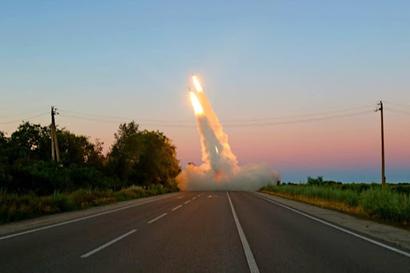
Due to all the word of a counter-offensive being spread and the official announcement, Russian military leadership relocated their most capable combat units to the right-bank of the Dnieper, including airborne and naval infantry Despite the reduction in the span of the frontlines after March, the Russians would still be depriving other fronts of units, and in this case, the Kharkiv axis forces would be reduced
What began as a local offensive north of the city of Balakliya in Kharkiv Oblast snowballed into a massive breakthrough in the Russian lines on September 6th By the next day, the AFU liberated some 400 square kilometres of territory in Kharkiv Oblast Ukrainian forces ended up in positions north of occupied Izyum, a city captured by Russian forces in early April Russian forces, consisting of men conscripted from the self-proclaimed Donetsk People's Republic, SOBR (Russian special police), and Russian army regulars were taken by extreme surprise By September 9th, Russian forces were evacuating from Izyum and Kupiansk, Kharkiv Oblast in advance of the Ukrainian push The next day on the 10th, the Ukrainian flag was raised over Izyum
Retreating Russians were harassed by fire as they ran from the region The extent of the surprise offensive and the subsequent rout was underlined by the abandonment of dozens of Russian military vehicles and other equipment soon captured by the AFU Markings on many of the vehicles indicated they belonged to the 1st Guards Tank Army; Russia's premier armoured formation meant to face NATO forces in the event of war These captured vehicles were pressed into service with AFU units, such as the 93rd Mechanised Brigade (jokingly transformed into an armoured unit, with all the captured tanks they had discovered)
No one was surprised when the first atrocities were discovered in Izyum The Bucha Massacre set the precedent that atrocities would be discovered in recently liberated areas of Ukraine Mass graves were discovered in the forest outside the city We only know the contents of one grave, where 447 bodies were discovered, and only 22 were military service members Similar to Bucha, Russian disinformation attempted to toss the blame onto Ukraine Their narrative failed to convince many in western social media, thanks in part to investigative journalists such as Bellingcat and an online antidisinformation group known as NAFO (North Atlantic Fella Organisation) Despite the baseless facts of the Russian narrative, the purpose for it is to continue to “inform” the people already in the Russian propaganda circle instead of convincing outsiders.
Ukrainian forces crossed the Oskil river after September 13th. Numerous smaller settlements were liberated. The next objective was Lyman, yet another strategic city to control for its crossroads and railroad.

The Russians had been routed On September 11th, the Russian Ministry of Defense announced they were leaving Kharkiv Oblast Ukraine advanced up to the Oskil River bordering Kharkiv Oblast by September 13th, capturing the transportation hub of Kupyansk and ending the lightning first phase of the offensive Ukraine’s success was attributed to its element of surprise Russia also had been understrength on the Kharkiv front, as combat units were relocated to Kherson in the south Long-range precision artillery (such as howitzers with guided shells or GMLRS fired by M270 and HIMARS) that so far had been extremely successful in the conflict was once again exploited by the Ukrainians, who could strike at the Russians and valuable targets long before they could meet close
Since March, when Russia left the Kyix axis and northeastern Ukraine, the war had shifted to the east and south. Ukraine experienced numerous setbacks throughout the Spring and early Summer. Russia still held the initiative, meaning they got to choose where they could attack. The besieged city of Mariupol fell after a stubborn defense, and later Sieveredonetsk and Lysychansk fell, along with several surrounding settlements in Luhansk Oblast such as Lyman. Russia had artillery superiority in these battles, with Ukrainian troops saying they were outgunned in artillery by 3 to 1. Delivery of western heavy weapons helped ease this disadvantage, though it would still persist.
These setbacks were offset by Ukrainian success in other realms, such as several missile and drone strikes against warships of the Black Sea Fleet and forcing Russia to abandon Snake Island before raising the Ukrainian flag again Numerous surprising deep strikes were carried out by Ukraine on Russian rear lines and within Russian borders (such as the city of Belgorod), undermining the idea that Ukraine could not touch Russia Despite Russian territorial advances, these were small gains in comparison to the size of Ukraine, and they came at a high cost for both sides
Sustaining the war became an interest to both sides after the first weeks Ukraine, despite inheriting massive Soviet-era stockpiles, had left most of it to decay, and expended other weapons during the eight years of war in the Donbas since 2014 After March, Ukraine was in need of resupply Previously, countries backing Ukraine had only sent infantry-based weapons, anticipating some sort of guerilla resistance Now that it was clear Ukraine retained a conventional army, the focus shifted to heavy equipment At Ukraine’s request, western nations (mostly those in the EU or NATO), began sending various kinds of heavy arms The most wanted were artillery pieces and armoured fighting vehicles Initially, these were leftover Soviet-origin weapons from former Warsaw Pact states However, the need shifted to NATO standardized weapons, as most of the Soviet-style weapons were no longer in production Armoured vehicles were a more tricky subject, but eventually, Soviet-origin armour and then surplus western personnel carriers would find their way into the Armed Forces of Ukraine Barriers to sending heavy weapons have included logistics issues and vetos from unwilling or neutral manufacturing nations such as Switzerland and Israel
Canada is one of many active contributors to Ukraine’s defense. Not only does Canada provide humanitarian aid, they have also delivered “lethal aid”. These are mostly weapons that come from the stockpiles of the Canadian Armed Forces (CAF). Besides personal equipment (recently including winter uniform and gear) and infantry weapons such as the M72 light anti-tank weapon, Canada has also been among the nations to provide heavy equipment.
The CAF has donated 4 of the CAF’s 37 M777 howitzers to Ukraine, during a time in April when Australia pledged 6 M777s and the United States 108 from their own military stockpiles too Other heavy equipment includes 8 Senator infantry mobility vehicles and 39 Armored Combat Support Vehicles The ACSVs were originally ordered as part of a larger procurement program for the CAF, but this specific order was instead pledged for delivery to Ukraine Possibly as noteworthy as vehicle deliveries are the donation of 20000 155mm shells for M777 and other NATO 155mm howitzers, including Excalibur GPS-guided shells The sustainment of ammunition will always be a concern for Ukraine as they expand thousands of shells each week Canada joins more than 50 other nations in the United States-led Ukraine Defense Council Group to continue meeting the needs of Ukraine As of November 14th, Canada has committed a total of $3 4 billion in assistance to Ukraine since February, per the Prime Minister of Canada’s Office
Numerous war crimes and other atrocities have been uncovered In the city of Mariupol alone, Ukrainian officials estimate about 25,000 civilian deaths The city had also lost electricity and running water, a detriment to the residents who remained 458 bodies were uncovered in the Kyiv suburb of Bucha, with evidence of them having their hands bound, and executed by Russian troops They were among 1300 civilian bodies documented in Kyiv Oblast Treatment of POWs has also been rough Evidence of both Ukrainian and Russian mistreatment of POWs has emerged Notable has been the treatment of prisoners taken from Mariupol No matter the far-right affiliation of the Azov Regiment, or the foreign nationality of Ukrainian Marines, they are still legal combatants Russian propaganda has tried to pass them off as mercenaries and other titles
Unfortunately for Russia, their narrative fell apart when POWs from Mariupol were released in prisoner swaps several times despite vows to punish them.

Beginning in July, Ukraine began touting a counterattack in the south of the country, in Kherson Oblast During this time, it would be Russia who made the first move, advancing into a handful of villages in Mykolaiv Oblast to the north of Kherson before stalling The offensive became official on August 29th, when President Zelenskky, the parliament, and AFU Operational Command South announced that an offensive had begun Social media reported immediate manoeuvre actions from August 30th, involving localised AFU actions and Russian counterattacks Some villages were liberated at this time However, the AFU knew that they were now committing to a long game of attritional battle against the Russians on the right bank of the Dnieper River Due to all the word of a counter-offensive being spread and the official announcement, Russian military leadership relocated their most capable combat units to the right-bank of the Dnieper, including airborne and naval infantry Despite the reduction in the span of the frontlines after March, the Russians would still be depriving other fronts of units, and in this case, the Kharkiv axis forces would be reduced What began as a local offensive north of the city of Balakliya in Kharkiv Oblast snowballed into a massive breakthrough in the Russian lines on September 6th. By the next day, the AFU liberated some 400 square kilometres of territory in Kharkiv Oblast. Ukrainian forces ended up in positions north of occupied Izyum, a city captured by Russian forces in early April. Russian forces, consisting of men conscripted from the self-proclaimed Donetsk People's Republic, SOBR (Russian special police), and Russian army regulars were taken by extreme surprise. By September 9th, Russian forces were evacuating from Izyum and Kupiansk, Kharkiv Oblast in advance of the Ukrainian push. The next day on the 10th, the Ukrainian flag was raised over Izyum. The Russians had been routed. On September 11th, the Russian Ministry of Defense announced they were leaving Kharkiv Oblast. Ukraine advanced up to the Oskil River bordering Kharkiv Oblast by September 13th, capturing the transportation hub of Kupyansk and ending the lightning first phase of the offensive.
Ukraine’ssuccesswasattributedtoitselementof surprise.Russiaalsohadbeenunderstrengthon theKharkivfront,ascombatunitswererelocated toKhersoninthesouth.Long-rangeprecision artillery(suchashowitzerswithguidedshellsor GMLRSfiredbyM270andHIMARS)thatsofarhad beenextremelysuccessfulintheconflictwasonce againexploitedbytheUkrainians,whocouldstrike attheRussiansandvaluabletargetslongbefore theycouldmeetclose RetreatingRussianswere harassedbyfireastheyranfromtheregion The extentofthesurpriseoffensiveandthesubsequent routwasunderlinedbytheabandonmentof dozensofRussianmilitaryvehiclesandother equipmentsooncapturedbytheAFU Markingson manyofthevehiclesindicatedtheybelongedto the1stGuardsTankArmy;Russia'spremier armouredformationmeanttofaceNATOforcesin theeventofwar Thesecapturedvehicleswere pressedintoservicewithAFUunits,suchasthe 93rdMechanisedBrigade(jokinglytransformed intoanarmouredunit,withallthecapturedtanks theyhaddiscovered)
Noonewassurprisedwhenthefirstatrocitieswere discoveredinIzyum TheBuchaMassacresetthe precedentthatatrocitieswouldbediscoveredin recentlyliberatedareasofUkraine Massgraves werediscoveredintheforestoutsidethecity.We onlyknowthecontentsofonegrave,where447 bodieswerediscovered,andonly22weremilitary servicemembers.SimilartoBucha,Russian disinformationattemptedtotosstheblameonto Ukraine.
Theirnarrativefailedtoconvincemanyinwestern socialmedia,thanksinparttoinvestigative journalistssuchasBellingcatandanonlineantidisinformationgroupknownasNAFO(North AtlanticFellaOrganisation).Despitethebaseless factsoftheRussiannarrative,thepurposeforitis tocontinueto“inform”thepeoplealreadyinthe Russianpropagandacircleinsteadofconvincing outsiders.UkrainianforcescrossedtheOskilriver afterSeptember13th.Numeroussmaller settlementswereliberated.Thenextobjectivewas Lyman,yetanotherstrategiccitytocontrolforits crossroadsandrailroad.TheAFUemployedan encirclementstrategyandsubsequentlymovedto cutofftheoccupiedcityfromthenorthandsouth. Intheeast,asingleroadspanningaroutefromthe citiesofKremminatoTorskappearedtohavebeen purposefullyleftopenforRussianforcestoleave thecityinsteadofresolvingtofighttothedeath. Russianforcesretreatingontheroadwaywere consistentlyharassedbyartillery.
Thus, the AFU entered the city on October 1st-2nd once the Russians left, avoiding a costly siege battle The liberation of Lyman had also been a setback to Russia's sham referendum and annexation of Luhansk (98 42% in favour), Donetsk (99 23% in favour), Zaporizhzhia (93 11% in favour), and Kherson Oblast (87 05% in favour) on September 27th Lyman as a “Russian city” had been captured by Ukraine In tandem with the Russian sham referendum, President Vladimir Putin declared “partial mobilisation” on September 21st, an after-effect of the offensive and a whole ordeal itself
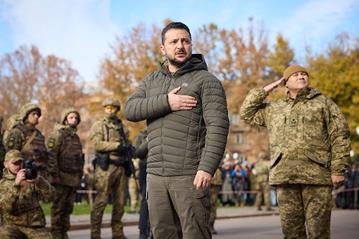
The Ukrainian Counter-Offensive: Kherson After the liberation of Kharkiv Oblast, attention shifted back to the south in Kherson A day after the liberation of Lyman, Ukrainian forces once again began advancing in the Kherson region, liberating several settlements in the north However, these advances eventually stalled. This highlighted the true nature of the battles in the south; battles that depended on position and artillery rather than advancing. The AFU knew what they were committing to, a battle of attrition that they were in favour of winning. The crossings over the Dnieper, particularly the now infamous Antonovsky Bridge came under repeated barrages by Ukrainian longrange GMLRS munitions, the only type capable of hitting at range with such accuracy.
Although this didn’t destroy the bridge, it damaged it sufficiently and continuously enough to force Russia to resort to barges and pontoons to resupply. The disadvantage of ferrying supplies like this is that only small volumes could cross, and heavy equipment was not a priority over provisions.
The methodical battle of attrition would pay off. One push was achieved in the north of Kherson Oblast around the first half of October, showing that the strategy was paying off. Evidence of Ukrainian casualties would continue to emerge, yet so did Russian losses. It would be another few weeks of heavy fighting until the Russian side would be forced to fold On November 9th, Russia announced they were withdrawing their troops from the right bank of the Dnieper This announcement came as the AFU came close to capturing the fortified town of Snihurivka, raising the Ukrainian flag the next day The Victory was achieved when Ukrainian forces eventually entered Kherson in the wake of Russians retreating across the Dnieper Kherson would be liberated on November 11th without a fight in the city, sparing it of a destructive urban battle some observers thought would occur
Videos emerged from Kherson of the city's residents greeting the AFU entering the city In one video, a reporter with Sky News was swarmed by residents, gleeful of Liberation and thanking the reporter It can be assumed that many shed a teardrop at the sight of such a wonderful event The scenes that emerged resembled that of the Liberation of Paris in the Second World War The city's residents would once again be free after 9 months of repressive occupation
Ukrainian President in flagraising raising ceremony Source: Ukrainian Presidential Press OfficeFor Ukraine, this was not a bloodless affair as many sacrifices had to be made, but the victory was ultimately a hard-fought one that was well deserved for them For Russia, it was a resounding defeat Billboards with posters that read “Russia is here forever” lasted only 3 months since the sham referendum President Zelensky even visited Kherson on November 14th, in front of several spectators
Kherson was left without electricity or running water after liberation The Antonovsky bridge was fully destroyed by the retreating Russians, keeping the AFU on the right bank of the Dnieper for now Landmines had been used extensively in the Russian defence, and these remain a lingering threat One of the most grisly facts is the Russian deportation of Kherson residents Russia forcibly moved around 70,000 Kherson residents to the left bank of the Dnieper in late October when the fight looked to be lost Ukraine also announced that city residents may evacuate voluntarily to somewhere safer as winter looms Restoration of infrastructure in the city continues, including the return of railway services By late November, the temperature began to drop, seemingly signalling the end of the third phase of the war, and the start of the second winter for this war
...
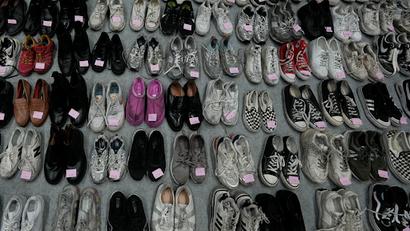
On October 29, 2022, the Halloween festivity that brought Seoul, South Korea to life in Itaewon-dong turned into a tragedy that left the country in mourning
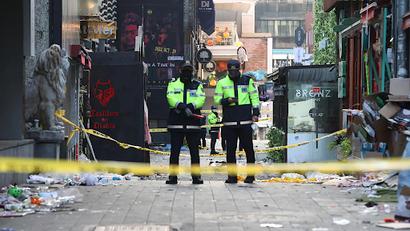
The Itaewon district is a cosmopolitan area of Seoul, welcoming foreign cultures with open arms to its nightlife Its streets are bustling with busy shops, nightclubs, and bars, which are particularly active during festive events Halloween parties are extremely popular in many nightlife areas, including Itaewon, Hongdae, and Gangnam Unfortunately, the unanticipated amount of partygoers resulted in a catastrophic stampede Thousands of partygoers began flooding into the narrow alleys of Itaewon around 5 p m , and the numbers promptly shot up to approximately 100,000 Witnesses at the time observed the crowd spewing into the sloping alleyway beside Hamilton Hotel, which was barely 4 meters wide Some left the party soon after seeing the staggering amount of people in the streets, feeling overwhelmed by the frantic activity and lack of space Regardless, youths in costumes continued to pool into the cramped streets, not realizing the danger of the situation, and without any authorities managing the immense group, chaos was inevitable
At 18:34, the first call to the police station was made as others were being crushed, falling, and getting injured due to the overwhelming pack. The first callers warned the police of the situation and requested enforcement to control the chaotic crowd. Despite the desperate calls, only a few officers were sent to check the scene. Hours before the disastrous crush, people started calling for medical assistance and missing people.
At 20:53, one caller urgently explained the problem. “I feel like I am going to get crushed…many people are being crushed… it is chaos.” As well, many callers were heard shouting “please help us.”
By the time authorities were sending enforcement, people were having difficulty breathing and passing out, falling into cardiac arrest Those who realized the peril escaped by any means; one was seen climbing on the walls, hoping to avoid the deadly crowd That night, 137 officers were dispatched along with several ambulances, yet they were outmatched by the crowd of 100,000 Thus, announcements were promptly made by the Seoul metropolitan government, telling the people to return home to manage the disarray
After the tragic night, a total of 156 were confirmed dead, of which the missing people were identified, and 151 were injured Most casualties were in their 20s or 30s
It became evident that the police did not respond adequately to the emergency calls, considering that only four dispatches were made during the first few hours, which sparked outrage among the citizens “Through this incident, I feel a deep responsibility for public safety and we will do our best to make sure such a tragedy does not occur again,” said the national police chief
Officers at the scene of the tragedy Source: BBC News Shoes left behind by the victims Source: CBC
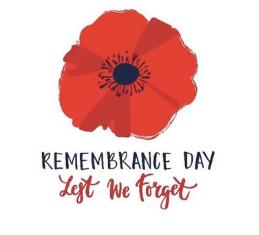
On November 10th, many students at Pinetree Secondary School attended the Remembrance Day Assembly
During the assembly, there were various events and activities shown to the students to let teenagers reflect on wars and peace
First, as a tradition at all schools, students, teachers, and guests stood up to sing O Canada together with the band playing instruments and the choir singing Everyone dressed in their best clothes and wore a red poppy on their chests to honor armed forces members who have died in the line of duty in the First World War
Second, the ceremony started with a group of 3 cadet members dressed in uniforms walking to the center of the assembly One was the leader of the group calling out commands, and the other two were responsible for carrying Canada’s national flag and British Columbia’s provincial flag While the group had walked in and settled, bagpipes were played Afterward, the assembly leader went up and made a brief introduction to all participants
Next,bandsandchoirstooktheirturnplaying excellentmusic;stronglyrelatedtothetopic.All themusicwassolemn,leadingeveryonetotravel backtothepast.Theirperformancewasamazing andinfluential.Thefollowingeventwasadetailed speechfromthespecialguestwhohadworkedon RemembranceDayactivitiesinthegovernment departmentforyears.Thespeechtalkedaboutthe backgroundinformationofRemembranceDayand theFirstWorldWartoshowtheimportanceof celebratingthisday Twostudentrepresentatives stoodupandintroducedmoreaboutthewars, poppies,andhowtosupportthisimportant holiday
Finally,dramaandchoirstudentscooperatedwell togethertotellaninterestingstoryaboutthree elephantsandworkersinazooduringtheFirst WorldWar Theyweretellingtheplotsand picturesbymakinghandgesturesorposturesand singingorreadingthewordswithemotion Inthe end,alargenumberofpeopleweresadandmoved bytherealstory
Onceagain,tohonortheoneswhosacrificedtheir livesinthewar,everyonestoodupagainand remainedsilentfor2minuteslookingatthefront Atlast,thecentralgroupwiththeflagsexited firstlywiththebagpipesplayingsadly
School began in September and it has already been three months since the start of the school year. The grade 9s have begun their very first year in PinetreeLet’s see how they feel about the school so far! Kyla, a student from grade 9, shares her thoughts on how she is settling in Pinetree. “Things I like the most in Pinetree are the electives and the club events. I especially like the party held by the Global Club. I could also try things I did not get to do in middle school. Also, I find it easy to meet different kinds of people in high school.” “Before my first year, I thought high school would be a lot like the tv shows and movies I’ve seen. In the movies, there are different groups of kids who are classified as ‘popular’ and ‘unpopular’, but here it is very different from that. I like how we aren’t being labeled at school.”
“I like the ESS schedule because it gives you a chance to catch up on your work and to study before your next class. I just can’t get used to the schedule here because the classes were much shorter in middle school, having only thirty minutes each.” Some suggestions Kyla made are to have fewer assignments and more quizzes instead of tests. “There are too many assignments for science. I also think it would be better if we had more quizzes instead of a huge test. Having a test is stressful because we have to memorize everything we have learned throughout the unit all at once ” Kyla is also hoping that there could be a club for performance arts next year
